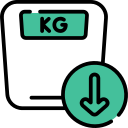Q. How can lifting techniques help prevent back injuries?
Doctor Answer is medically reviewed by SecondMedic medical review team.
Proper lifting techniques are crucial for preventing back injuries, as lifting heavy objects or lifting incorrectly can place significant strain on the muscles, ligaments, and structures in the back. Here are some key lifting techniques that can help prevent back injuries:
1. Assess the Load: Before lifting an object, assess its weight and size. Determine whether you can safely lift it on your own or if you need assistance or equipment, such as a dolly or hand truck, to move it.
2. Plan Your Lift: Plan your lifting strategy. Determine the best route to your destination, clear any obstacles in your path, and make sure the area where you'll be placing the object is clear and stable.
3. Warm-Up: If you are about to engage in heavy lifting, warm up your muscles with gentle stretching exercises and light physical activity. Cold muscles are more prone to injury.
4. Use Proper Footing: Stand with your feet shoulder-width apart for stability. One foot should be slightly in front of the other to maintain balance.
5. Bend at the Hips and Knees: Instead of bending at the waist, which can strain the lower back, bend at the hips and knees to squat down to the object. Keep your back straight while doing so.
6. Maintain a Neutral Spine: Throughout the lift, keep your spine in a neutral position, with the natural curves of your back maintained. Avoid excessive arching or rounding of the back.
7. Get a Firm Grip: Use both hands to firmly grip the object. Your palms should be under the object, and your fingers should wrap around it securely.
8. Engage Your Core: Tighten your core muscles (abdominals and lower back) to provide extra support to your spine during the lift.
9. Lift with Your Legs: Use the power of your legs and buttocks to lift the object, not your back. Push through your heels to stand up, keeping the object close to your body.
10. Avoid Twisting: Do not twist your torso while lifting. Instead, pivot your feet to turn your entire body in the desired direction.
11. Move Smoothly: Lift the object smoothly and avoid sudden jerky movements. If you need to change direction, do so slowly and carefully.
12. Take Breaks: For repetitive lifting tasks, take regular breaks to rest your back and prevent muscle fatigue.
13. Ask for Help: If an object is too heavy or awkward to lift safely on your own, ask for assistance. Don't attempt to lift it alone.
14. Use Proper Equipment: If your job involves frequent heavy lifting, make use of mechanical aids like forklifts or conveyor belts whenever possible.
15. Training and Education: Employers should provide proper training on safe lifting techniques and encourage employees to follow best practices.
Remember that proper lifting techniques not only help prevent immediate back injuries but also contribute to long-term back health. Consistently practicing safe lifting habits can reduce the risk of chronic back problems and maintain the overall health and well-being of your spine.
Related Questions
-
What can you do for thyroid problems? | Secondmedic
-
What are the common endocrine disorders linked with diabetes? | Secondmedic
-
Can eating too much sugar cause diabetes? | Secondmedic
-
With diabetes being a major concern, why is getting a diabetic profile test included in a full body health checkup so important? | Secondmedic











